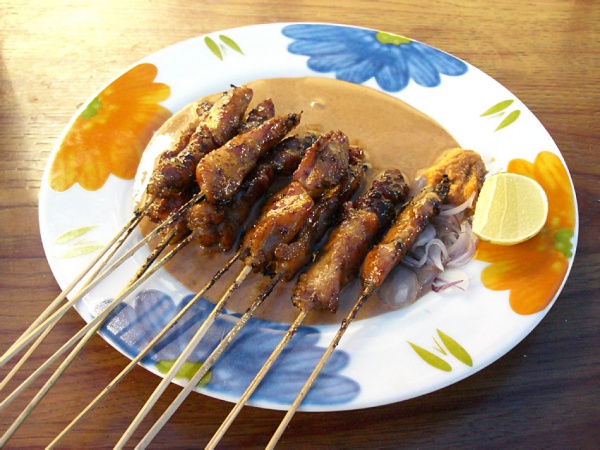Facts About Satay
Satay, also known as sate in Indonesian and Malay, is a cherished Southeast Asian dish composed of seasoned, skewered, and grilled meat served with a delectable sauce. Originating from Indonesia, this flavorful dish has captured the hearts of food enthusiasts in Malaysia, the Philippines, Singapore, Thailand, and Brunei. Satay can be prepared using a variety of meats, including chicken, goat, beef, pork, fish, or even tofu, and is typically grilled over wood or charcoal fires. It is often paired with spicy seasonings and a rich peanut sauce, commonly referred to as satay sauce.
In Indonesia, satay is a national favorite, showcasing a diverse array of regional variations. It can be found being sold by street vendors or served in upscale restaurants. Its popularity has spread to other Southeast Asian countries and beyond, with each region adding its unique twist. In Indonesian cuisine, satay is often associated with kecap manis, a sweet soy sauce, and is frequently served with lontong, a type of rice cake.
The history of satay traces back to Java, influenced by Indian kebabs and Arab traders and immigrants. Over time, the dish has evolved, resulting in numerous regional variations depending on the type of meat used and the cooking methods. Satay has become a global favorite, with similar dishes like Japan's yakitori, Turkey's shish kebab, and South Africa's sosatie.
Making satay involves marinating the meat, skewering it, and grilling it over charcoal. The skewers are usually made from bamboo or coconut palm fronds. Satay is typically served with peanut sauce, rice cakes, and pickles. There are many variants, including those made with chicken, beef, pork, seafood, offal, and even exotic meats like turtle, crocodile, horse, and snake. In Indonesia, specialized restaurants offer a wide range of satay options.
Satay has also integrated into the culinary traditions of other countries. In Malaysia, it is widely loved, with popular variations like Sate Kajang. The dish has even become a part of Dutch cuisine, featuring versions like sateh kambing and satékroket. In the Philippines, satay is known as inihaw or inasal, with offal-based versions like isaw being common street food.
In Singapore, satay has been a staple since the 1940s, sold by vendors from various ethnic backgrounds. The iconic Satay Club has left a lasting impact on how satay is enjoyed in the country. Modern fusion dishes like satay burgers and satay bee hoon have also emerged, blending traditional flavors with contemporary twists.

 Brunei
Brunei